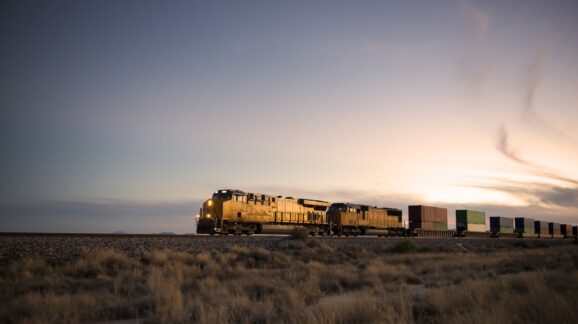Dead Man’s Switch: Biden Administration Fights Railroad Automation

Photo Credit: Getty
Of all modes of transportation, one would think that railways would be at the leading edge of automation. After all, they don’t use public roads, the open sea, or the air but instead run on dedicated tracks, giving them a built-in safety advantage. But while air transportation industry experiments with drones and auto manufacturers work on self-driving cars, the rail industry is being pushed in the opposite direction thanks to organized labor and its allies in Congress.
Federal Railroad Administration (FRA) head Amit Bose told the North East Association of Rail Shippers in April that all trains should have a minimum crew of two. The current industry standard is one engineer and one conductor, but the railroads are moving to take the conductors off individual trains and instead have them be ground-based and servicing multiple trains.
“We think having a consistent standard for crew size across the country benefits the rail industry, benefits safety, and gives certainty on the regulatory environment when it comes to train safety,” Bose said. “Also, coupled with that, don’t forget: the trains are running longer. The length of trains is growing. Those longer trains in my mind require a level of crew size that is proportional to the length of the train.”
Bose is set to testify before the House Transportation Committee on Tuesday on the subject of freight rail safety. Expect him to call for legislation mandating the two-crew minimum.
Is a minimum number of crew needed? Probably not. The longer trains that Bose cited happened because the railway industry was reacting to the supply chain crisis of 2021. When goods began to pile up at seaports, longer trains helped to alleviate the congestion and get goods flowing.
There is scant evidence that this had a significant impact on safety. Bose’s own agency reports that the industry had 16.2 “accidents and incidents” per million miles traveled in 2021, up from 15.4 in the prior year. So, there was a spike, and it’s a good bet that that will be pointed out at Tuesday’s hearing. The figure is misleading, however, because 2020, the year the COVID-19 pandemic first hit, was a major outlier. The accident rate was 17.4 in 2019 and the industry’s average rate for the last six years is 16.6, well above the rate in 2021, despite trains getting longer.
2020 is an outlier because the coal industry, which mainly uses railways, was hit particularly hard by the initial shock of the COVID-19 pandemic. Building closures across the country meant less need for coal for electricity. By April 2020, use was down 21 percent from the previous year. As the Department of Labor reported last October: “With the United States relying less on coal, the demand for rail cars that transport coal decreases. In turn, there is a decrease in the need for rail cars overall. … [O]nce the country began to reopen in the summer [of 2020], the number of coal carloads began to increase.”
The rail industry has been reducing the number of workers for decades without making trains any less safe. Trains averaged three or more engineers up until 1992, according to data by the American Association of Railroads (AAR). That year there were about 30 accidents per million miles. Most trains now have only one engineer – the industry term for automation is “precision scheduled railroading” — and the accident rate is 10 per million miles. Note that the FRA’s earlier numbers were for “accidents and incidents,” while AAR’s statistics count accidents only, so they don’t match up precisely. Both nevertheless show that railways have gotten steadily safer.
So, if there’s little reason to think that railways need more workers to be safe, then why the push to increase their numbers? One explanation is that this has been a major goal of unions, who have always opposed any automation that results in a need for fewer workers. A two-crew minimum mandate has been a priority of the Sheet Metal, Air, Rail, and Transportation Union.
House Transportation Committee Chairman Pete DeFazio (D-OR), said in March, “Wall Street is extracting wealth from the deregulated railroads at the expense of poor service to railroad customers and on the backs of railroad workers,”.
DeFazio sponsored the House version of last year’s big infrastructure bill. The initial version included the two-crew minimum for trains, but that provision was later stripped out. DeFazio had to settle for a requirement for the Secretary of Transportation to prepare a report on “the number of crew members who were aboard a controlling locomotive involved in an accident at the time of such accident.”
I can save you some time, Congressman. Since the current standard industry is one engineer on a train, it is likely most accidents involve trains with one engineer. That doesn’t really prove anything.
The fact that the two-crew mandate got removed from the infrastructure bill is a sign that plenty of others in Congress see it as unnecessary. But that legislation was a big deal that drew a lot of attention and scrutiny from lawmakers. The Biden administration may be hoping that a stand-alone bill—or failing that, a Department of Labor rulemaking—has a better chance.
This post has been updated to more accurately reflect the technicalities of the proposal.